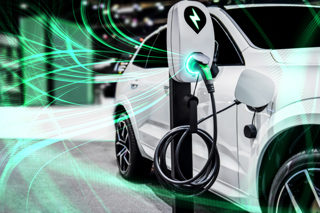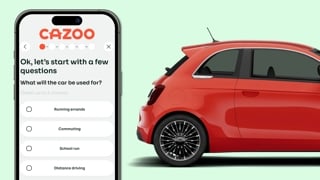The past couple of weeks have seen unprecedented and rapid changes at a personal and business level driven by sweeping government responses to the COVID-19 coronavirus pandemic.
Countries in lock down, travel restrictions, manufacturing plant closures – the impact on the automotive sector has been more severe than for many and the length and depth of disruption is as yet unknown.
But over and above the short-term challenges resulting from COVID-19, it should not be forgotten that the automotive sector faced significant headwinds long before this crisis emerged.
A sector grappling with challenges
Original Equipment Manufacturers (OEMs) have for some time been grappling with serious sector-specific challenges.
The first is the transition from internal combustion to alternative fuels. Huge investment is being made in alternative fuel technology from plug in hybrids to full BEVs. This has been driven partly by policy and environmental targets and to a lesser but growing extent, by consumer demand.
Strict new carbon dioxide emissions targets are being phased in across the EU. Under the rules, OEMs must cut their average fleet emissions to less than 95g/km of CO2 by 2021.
Beyond the technology, the industry faces major structural issues to which it is trying to adapt. The number of new drivers globally has been falling for some time and is exacerbated by the declining trend of car ownership in large cities as people opt to use other forms of transport.
UK automotive production has been on a downward curve since the peak of 2017 – when demand for new vehicles was inflated by preferential leasing offers, such as PCP handbacks.
Last year, the market corrected, and we saw a significant reduction in both end-user demand and the number of units produced, with little sign of levels reaching these heights again.
Compounding the fall in production is the recent high-profile announcements of some OEMs to close down manufacturing sites and leave the UK.
Supply chain is sector's biggest issue
And now with most of the world seemingly on lockdown, COVID-19 presents a new set of short-term challenges for the sector to work through.
The biggest single issue facing the sector today is its supply chain. To protect the safety of their own people, OEMs have quite rightly suspended production. The impact of plant closures, particularly on Tier 2 and 3 suppliers, has been severe with many facing an uncertain future.
The delicate, interconnected ecosystem of the auto sector, means that if an OEM were to lose a Tier 2/3 supplier, and unable to source a component quickly, production would stall resulting in the loss of hundreds of thousands of pounds per day.
Supply chain resiliency presents an interesting dilemma for OEMs. On the one hand they need to conserve cash for their own health and stability but on the flip side if they are too stringent on their suppliers they run the risk of their supply chain failing. There is a delicate balancing act to be negotiated.
Reinventing the supply chain model
The ability of the OEMs to successfully kick-start production post crisis hinges on their suppliers being able to fulfil and supply components.
Mapping out supply chain and parts supply will enable OEMs to identify failure points and potential contingencies.
For the short-term, to help preserve supply chain continuity, consideration should be given to supplier funding policies, extended payment terms, and where possible providing liquidity to suppliers to ensure businesses remain operational.
But in mapping out and stress testing the supply chain, a longer-term view should be taken, giving consideration to future resiliency and the steps that can be taken to reduce supply chain risk in the event another crisis unfolds in the future.
An alternative to relying on a global supply chain, for example, is to source parts and suppliers from a country or region level, thus helping to reduce added levels of complexity. And to reduce the risk of supplier failure, a number of suppliers per component could be utilised, to avoid reliance on a single supplier.
Retail and service innovation
Covid-19 crisis is likely to drive a rapid evolution of consumers attitudes towards digital channels.
Many may find themselves buying products online or directly from producers which they would have only considered purchasing from a retailer a few months ago.
Others may never have used an online channel before and will suddenly find a safer more convenient way to conduct purchases.
Dealers will continue to play a role but few can believe that this role will not to evolve from its current form. Whether that’s in the way that servicing is provided, how OEMs sell parts and accessories, the degree of channel integration and OEM oversight, or indeed, how we buy new and used cars. Only time will tell.
The next few months will likely see a quieter period with little dealer activity and low volumes for OEMs.
Whilst this is challenging to the P&L, it is also an opportunity to accelerate initiatives which have lingered on the shelf for too long or which have been characterised by dipping toes in the water rather than truly grasping the opportunity to evolve business models. Dealers could also look to develop and innovate new services with short-term potential, for example a flying doctor approach to repairs at the customer’s home (if government guidelines allow).
What does the future hold for the sector?
The Covid-19 crisis has brought a new set of challenges to the automotive sector which, while not unsurmountable, will test elements of the supply chain to its limits. That said, history has shown that the sector is resilient to significant shocks and will continue to thrive.
The crisis will be tough and right now, the focus is on resilience and survival. Looking ahead however, OEMs, dealers and suppliers must all use this period to get fit enough to recover and to adapt business and operating models to embed resilience, sustainability and a competitive edge.
Author: Peter Matthews, EY partner and advanced mobility and manufacturing leader




















TjeKvik Nick - 07/04/2020 12:03
Good points. Customers will also change their in dealership behaviour. Social distancing will reduce over time but customers will want and expect a digital contact free aftersales experience as well. TjeKvik dealers have seen exceptional increases in usage for both check-in and check-out via our mobile and in dealer solutions.